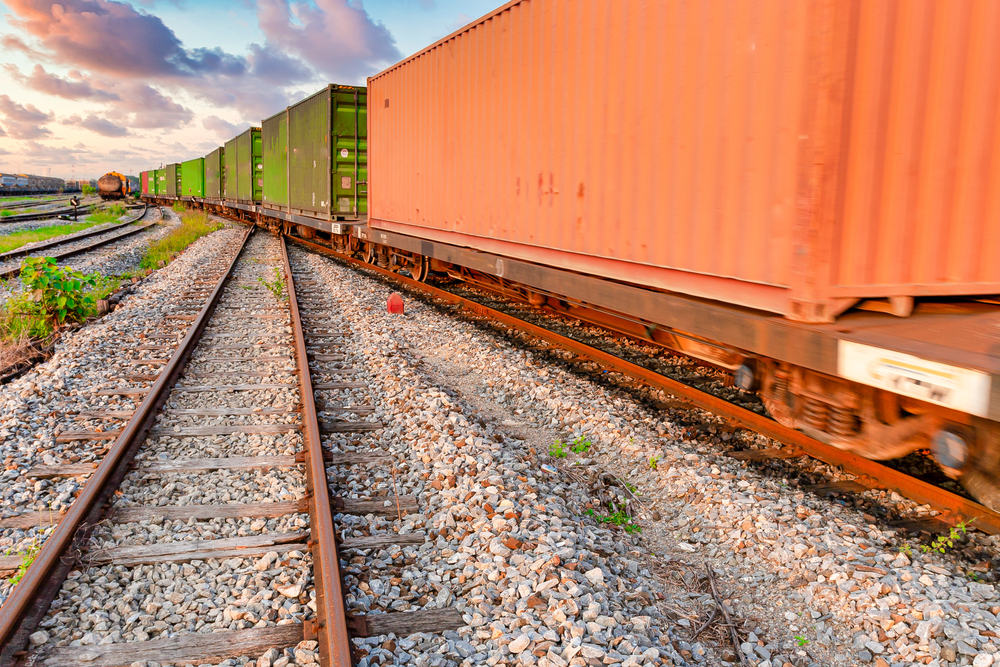How To Ship By Rail in Canada
As an integral part of the logistics and supply chain management industry, rail transport presents a reliable and efficient option for moving goods across vast distances.
For businesses looking to expand their distribution networks across Canada, rail shipping offers several advantages, including cost efficiency, environmental benefits, reliability, and the ability to handle large volumes. In this blog, we’ll be talking about the importance of rail shipping and how to ship by rail in Canada.
The Importance of Rail Shipping in Canada
Canada, with its expansive geography and major industrial hubs, relies heavily on rail to connect distant regions and facilitate international trade. The Canadian rail network spans over 46,000 kilometers, making it one of the most extensive in the world. Shipping by rail is not only a cost-effective solution but also reduces road traffic and lowers carbon emissions, aligning with global sustainability goals.
Understanding Rail Freight in Canada
Rail freight can accommodate a wide range of goods, from bulk commodities like grains and minerals to manufactured goods and intermodal containers. The key to effective rail shipping is understanding the types of rail services available and determining the best fit for your logistics needs.
Types of Rail Services
Bulk Freight: Ideal for large quantities of goods that do not require individual packaging.
Intermodal Freight: Uses containers that can be transported by rail, ship, and truck, offering flexibility.
Automotive Freight: Specialized service for transporting vehicles.
Dangerous Goods: Special regulations and equipment for hazardous materials.
Step-by-Step Guide to Shipping by Rail in Canada
1. Choose the Right Rail Carrier
Selecting the appropriate rail carrier is crucial. In Canada, major players include CN (Canadian National) and CPKC (Canadian Pacific Kansas City), among others. When choosing a carrier, consider factors like route coverage, transit times, pricing, and additional services such as cargo tracking and customer support.
2. Understand and Comply with Regulations
Rail shipping in Canada is governed by regulations to ensure safety and efficiency. Familiarize yourself with the Canadian Transportation Agency (CTA) guidelines, as well as any specific regulations related to hazardous materials, if applicable. Compliance is crucial to avoid fines and delays.
3. Prepare Your Shipment
Proper packaging and preparation are vital to protect your goods during transit. Depending on the nature of your cargo, you may need to consider:
Weather Protection: Rail cars can be opened or closed, so choose appropriately based on your cargo’s sensitivity to weather conditions.
Bracing and Blocking: This prevents cargo from shifting during transit, which is particularly important for heavy or unevenly distributed loads.
4. Optimize Loading
Efficient loading of goods onto rail cars can significantly impact the safety and stability of your shipment. Understanding the loading guidelines and weight limits is essential. Utilize professional loading services if necessary to maximize space and secure your shipment.
5. Implement Tracking and Security Measures
While rail shipping is generally safe, implementing tracking systems and security measures can provide additional peace of mind. Most rail carriers offer real-time GPS tracking options and other security services to monitor the shipment from origin to destination.
6. Coordinate Last-Mile Delivery
Rail terminals are often located outside urban centers, so planning for last-mile delivery is crucial. This involves arranging transportation from the rail terminal to the final destination, usually by truck. Effective coordination ensures that this final leg of the journey is smooth and timely.
Leveraging Technology in Rail Shipping
Advancements in technology have significantly enhanced the efficiency and reliability of rail shipping. Technologies like IoT (Internet of Things) for tracking, AI for route optimization, and blockchain for secure documentation are revolutionizing the industry. At PiVAL, we leverage these technologies to offer our clients streamlined and transparent rail shipping solutions.
Why Choose PiVAL for Your Rail Shipping Needs?
Choosing to work with a third-party logistics provider like PiVAL can streamline your rail shipping processes significantly. Here’s how PiVAL can enhance your rail shipping strategy:
Expertise and Experience: PiVAL has extensive knowledge of the Canadian rail system and logistics sector, providing you with expert guidance and tailored solutions.
Comprehensive Logistics Services: From handling initial drayage to managing crossdock operations and final delivery, PiVAL offers a complete suite of services to ensure efficient, hassle-free shipping.
Customized Solutions: Understanding that each business has unique needs, PiVAL offers customized logistics solutions designed to meet specific shipping requirements and business goals.
Member of the EMP Program: As a member of the EMP (Equipment Management Pool), PiVAL has access to a pool of more than 40,000, 53′ domestic containers and chassis available at a cheaper rate.
Conclusion
Shipping by rail in Canada is a strategic decision that can enhance your company’s logistics efficiency and environmental footprint. With the right planning, understanding, and execution, rail can be a cornerstone of your transportation strategy. PiVAL is here to assist every step of the way, ensuring that your rail shipments are smooth, cost-effective, and aligned with your broader business goals.
By embracing the robust rail network of Canada and optimizing your shipping strategies with PiVAL’s expertise, you can achieve significant logistical advantages and drive your business forward in today’s competitive market. Whether you are looking to expand your reach or streamline your supply chain, PiVAL is your trusted partner in rail freight logistics.
Stay Up-To-Date
There's always something new from PiVAL



Leave a Reply